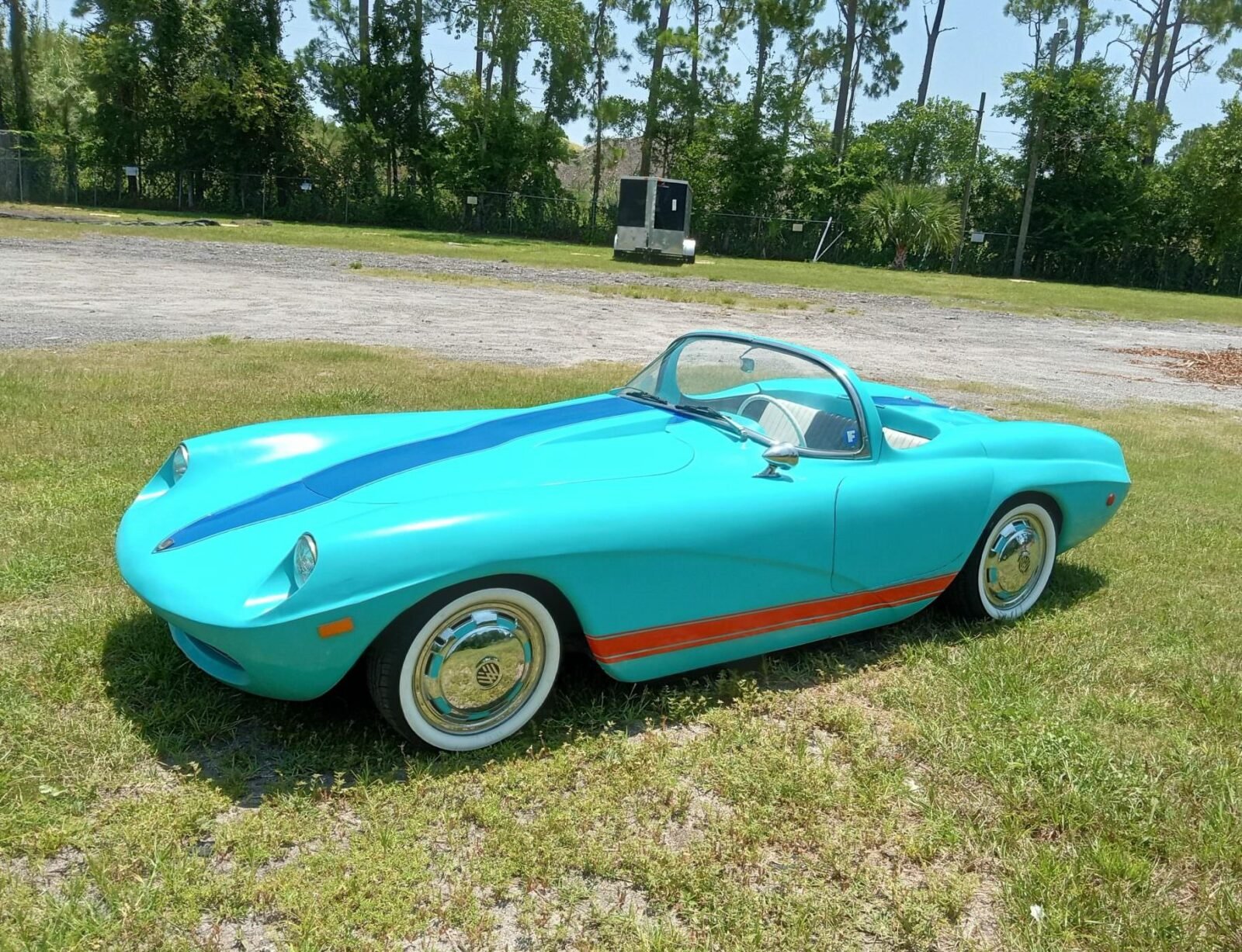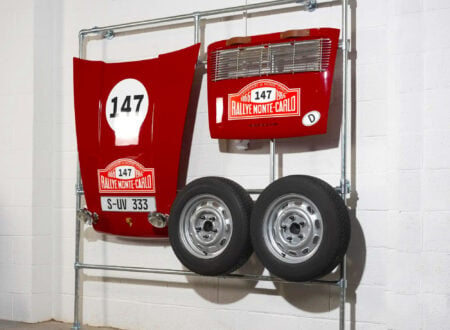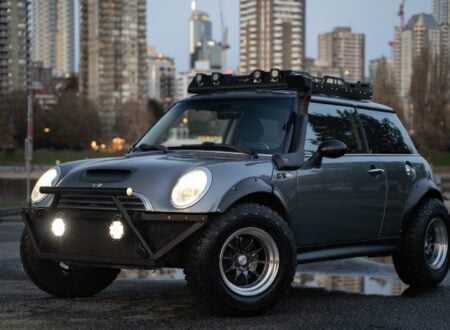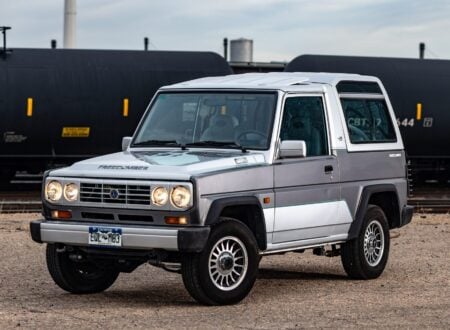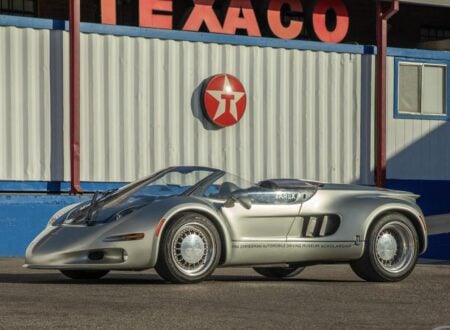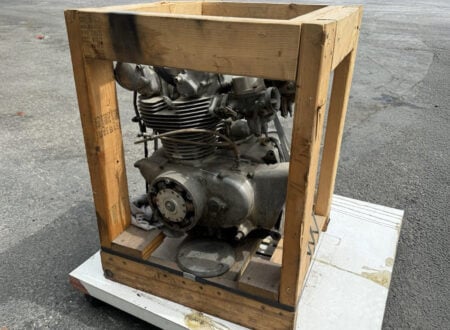This is a La Dawri Sebring, it’s a rare American sports car from the 1950s and it’s believed that just a handful have survived to the modern day. This one is being sold out of Ormond Beach, Florida and it’s previously been featured in ReinCARnation Magazine.
The La Dawri Sebring was offered as a fiberglass body that could fit a wide array of sports car bodies, including both front and rear-engined vehicles. The Sebring you see here was fitted to a VW Beetle platform, and it now possibly has the longest frunk in the world.
Fast Facts – The La Dawri Sebring
- La Dawri was the manufacturer of Canada’s first fiberglass car, the La Dawri Cavalier which entered production in 1956. In 1957 the company moved to ground central for fiberglass cars – California – and it became the largest fiberglass car maker in the world when measured by the number of models it offered.
- The company’s in-house developed cars included the Conquest, Quest, Sebring, Del Mar, and the Daytona. These bodies could be ordered in different wheelbases to suit different production car chassis, depending on the body you chose the wheelbases could vary from 76 to 120 inches.
- The La Dawri Sebring could be ordered in a few configurations, and it could be fitted to either a front engined chassis such as an MG, or a rear engined chassis like a Beetle.
- The donor vehicle that you chose for your La Dawri Sebring would typically provide not just the chassis but the suspension, brakes, wiring loom, and drivetrain. As a result the Sebring could have broadly differing levels of performance depending on what car it was based on.
A Brief History Of La Dawri Coachcraft
La Dawri Coachcraft was established in British Columbia, Canada by Leslie Albert Dawes. In 1956, the company introduced the La Dawri Cavalier, Canada’s inaugural fiberglass car. The name “La Dawri” came from the combination of Leslie Albert Dawes and his business partner Don Wright, resulting in “L. A. Da Wri.”
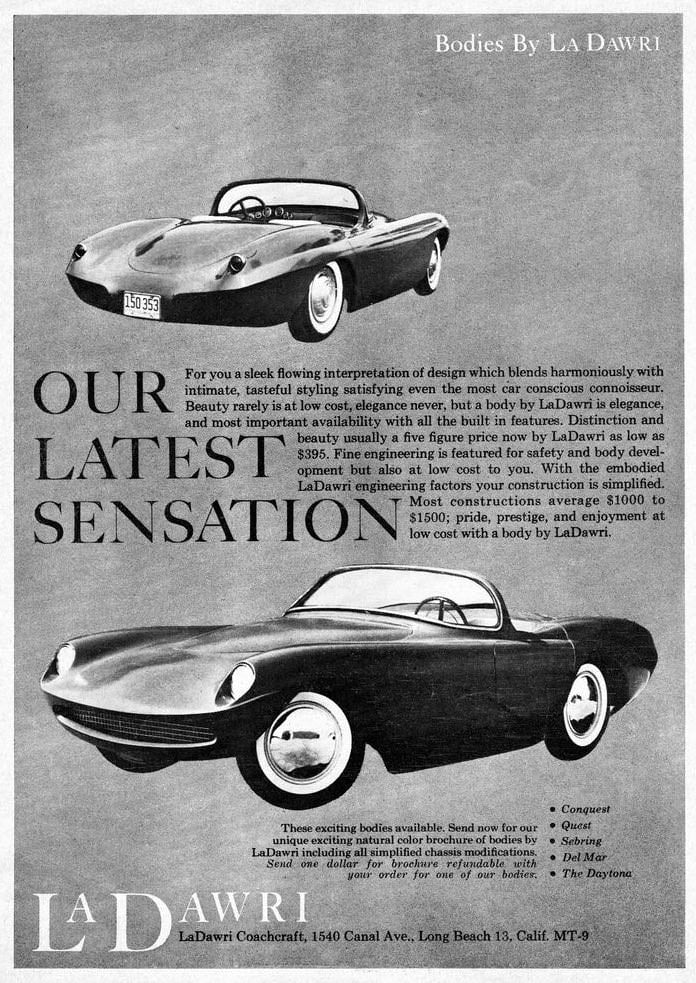

Just a year after unveiling the La Dawri Cavalier, the company relocated to California, the global hub of fiberglass automobile manufacturing. The Cavalier underwent a name change to Conquest and graced the cover of Road & Track magazine in July 1957, thrusting both the car and the company into the spotlight.
Subsequently, La Dawri launched the Daytona, a new model, followed by the Quest, a smaller version of the Conquest designed for smaller chassis. In 1961, La Dawri acquired the molds and rights to a series of fiberglass car bodies developed by Victress.
Victress, occupied with producing fiberglass products for the US Government, including the Olympic rings for the Squaw Valley Winter Olympics, had little time to spare. La Dawri rebranded and renamed the Victress models, keeping them in production while continuing to develop their own designs.
By the early 1960s, La Dawri had emerged as the world’s largest manufacturer of fiberglass car bodies, boasting an extensive lineup of models.
However, the 1960s brought changes for La Dawri. The popularity of cars like the Ford Mustang and the availability of affordable sports cars from the United States and Europe diminished the demand for fiberglass do-it-yourself kits, especially compared to the 1950s.
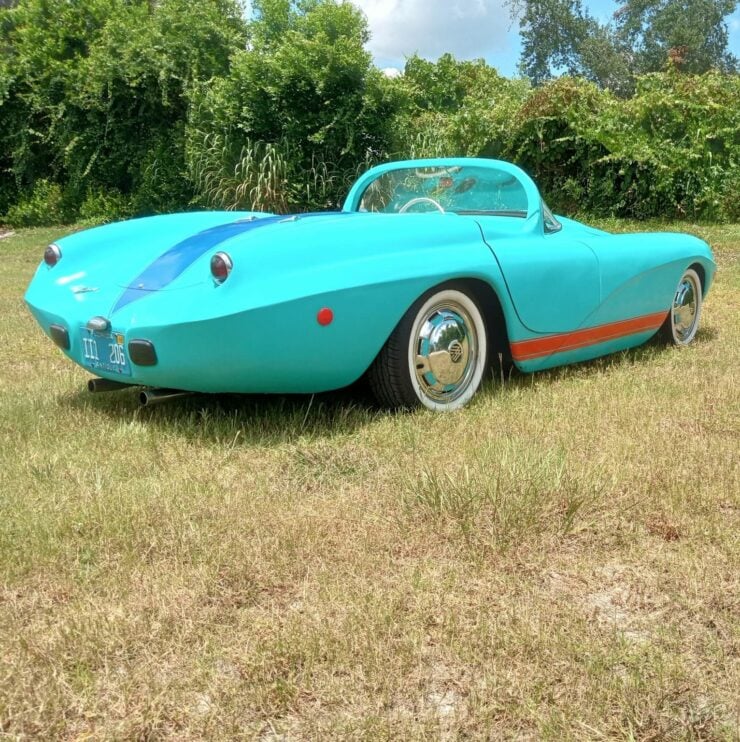

Nevertheless, specialized companies like Meyers Manx thrived during this period with their unique VW Beetle-based Manx fiberglass dune buggy.
Rumors circulated that either a factory fire destroying all the molds or the IRS pursuing unpaid taxes contributed to La Dawri’s eventual closure in 1965.
Today, surviving La Dawri cars are highly coveted, and enthusiasts like the team at Forgotten Fiberglass travel across the country in search of old, neglected fiberglass cars in barns and fields, undertaking restoration projects to revive them to their former glory.
The 1950s LaDawri Sebring Shown Here
The car you see here is a LaDawri Sebring based on a VW Beetle floorpan and drivetrain, as a result it’s titled as a 1956 Volkswagen.
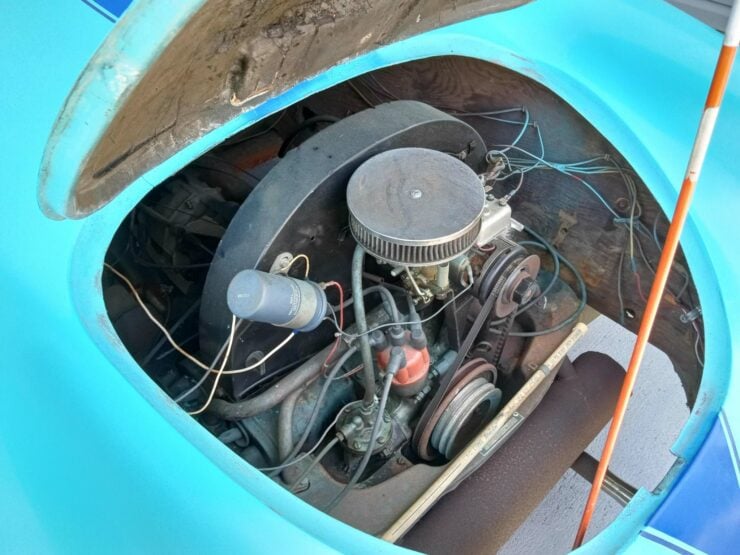

Interestingly this car is said to have been previously supercharged with a Judson supercharger system, although the compressor is no longer with the car the accessory pulley for it is still fitted – should a new owner want to acquire their own Judson and fit it.
Power is provided by a 1.3 liter Volkswagen flat-four, an air-cooled engine that sends power to the rear wheels via the original four-speed manual transmission. The Beetle also donated its platform chassis, suspension, and brakes to the Sebring which benefits from improved performance thanks to the replacement of the original much heavier steel Beetle body with the new lightweight fiberglass shell.
This particular car’s early history is largely lost, what we do know is that it was in storage in Illinois from 1975 until it was sold in 2013. The buyer then refurbished the car, the fiberglass bodywork was repaired and it’s now finished in a bright teal with blue and orange stripes,
The car rides on whitewall tires fitted to 15″ steel wheels with 1960s-era chrome hubcaps with matching teal accents. Stopping power is provided by Beetle hydraulic drum brakes on all four corners and the listing notes that a brake fluid flush was performed in preparation for the sale.


Inside the car you’ll find a Volkswagen two-spoke steering wheel which features teal accents, and it’s been fitted with a Wolfsburg center cap. The dashboard houses a VDO 80 mph speedometer and a Karmann-Ghia-sourced clock, as well as a rather optimistic 8,000 rpm tachometer, and it’s currently showing 78,000 miles.
It’s generally believed that fewer than a dozen of these remain, and possibly just enough to be counted on a single hand, so we only very rarely see them come up for sale. This car is now being offered on Bring a Trailer out of Ormond Beach, Florida.
If you’d like to read more about it or register to bid you can visit the listing here.
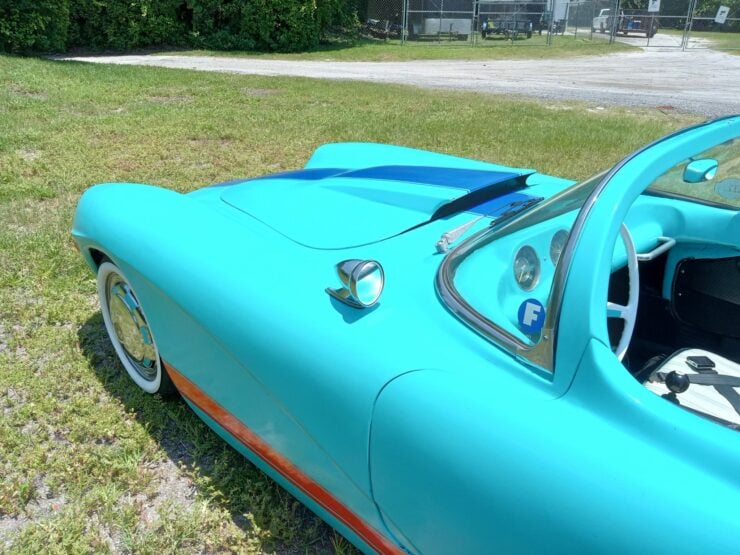
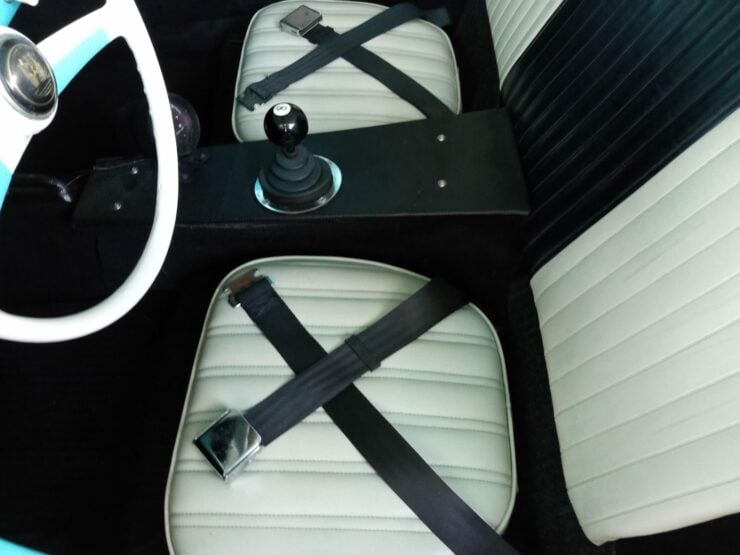
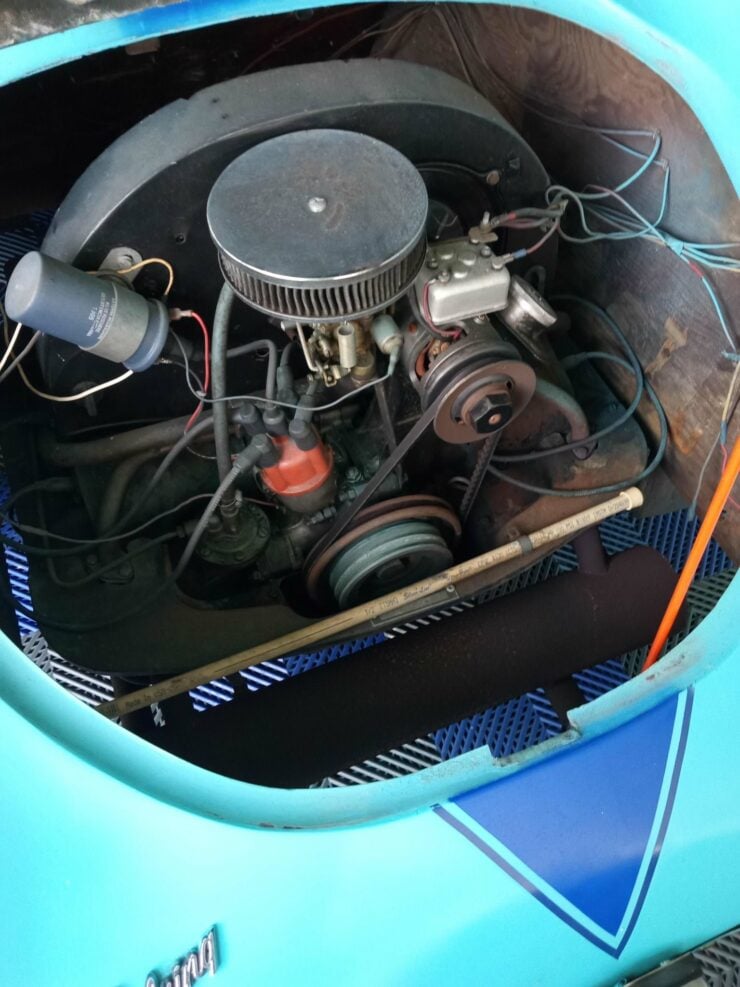
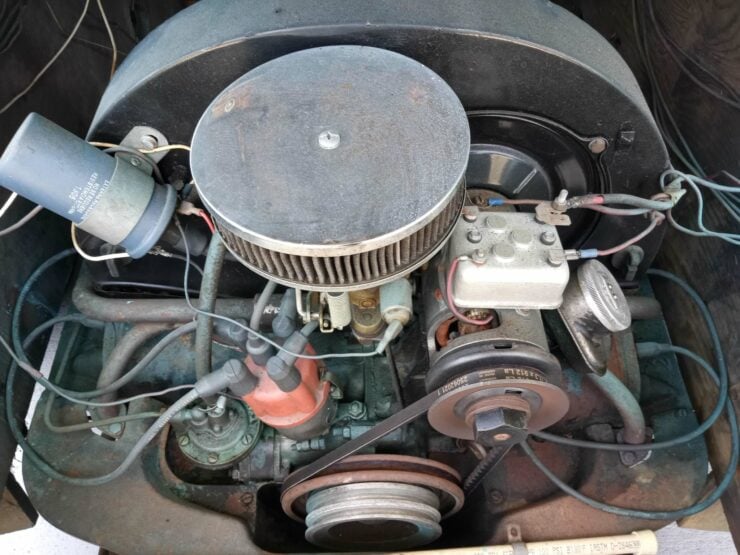

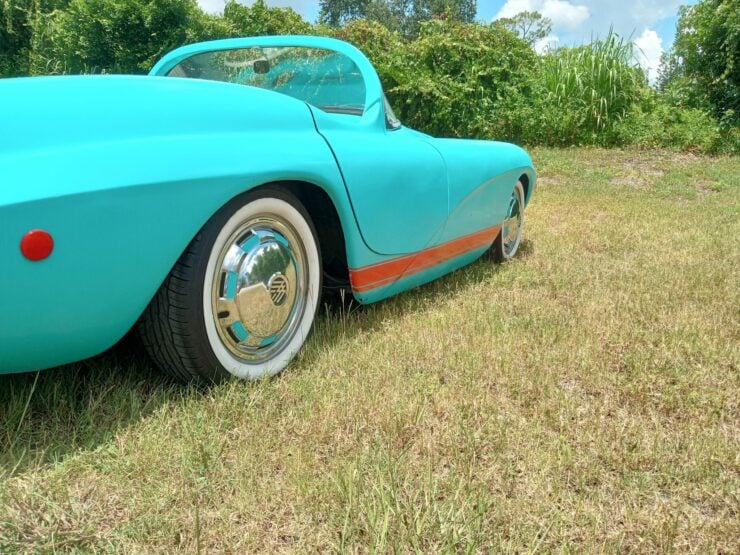
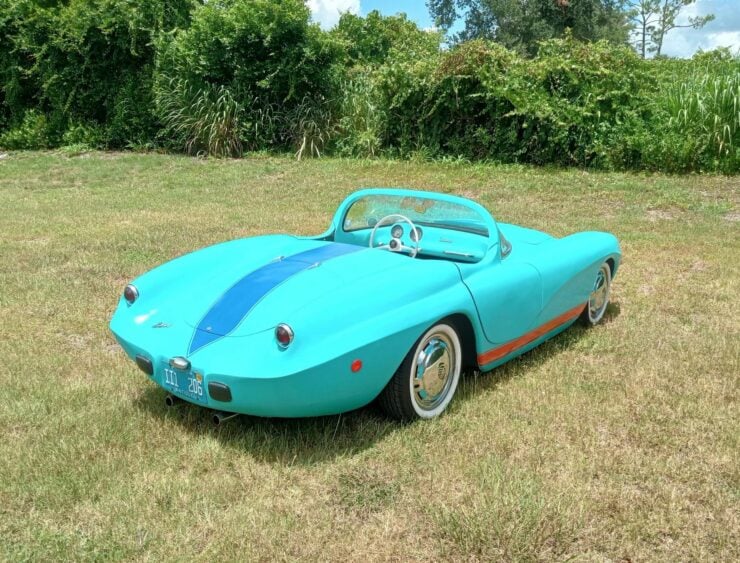
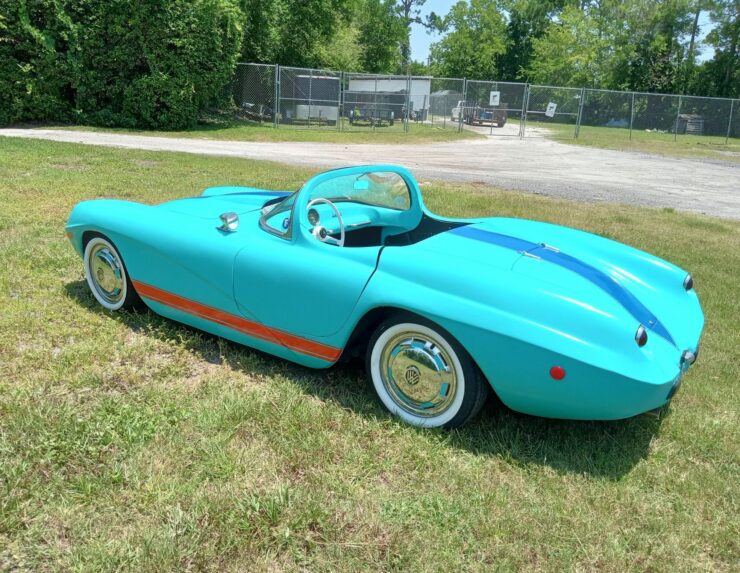
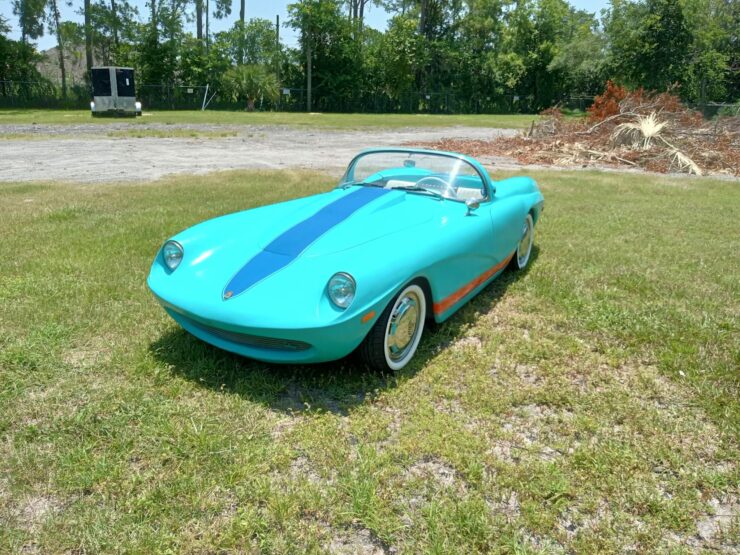
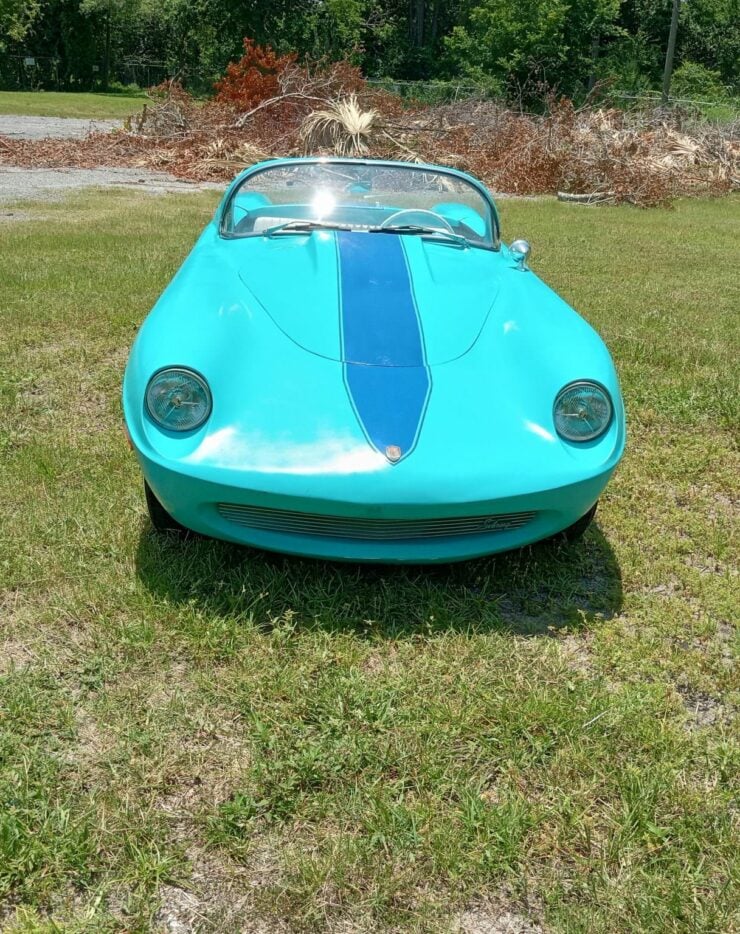
Images courtesy of Bring a Trailer

